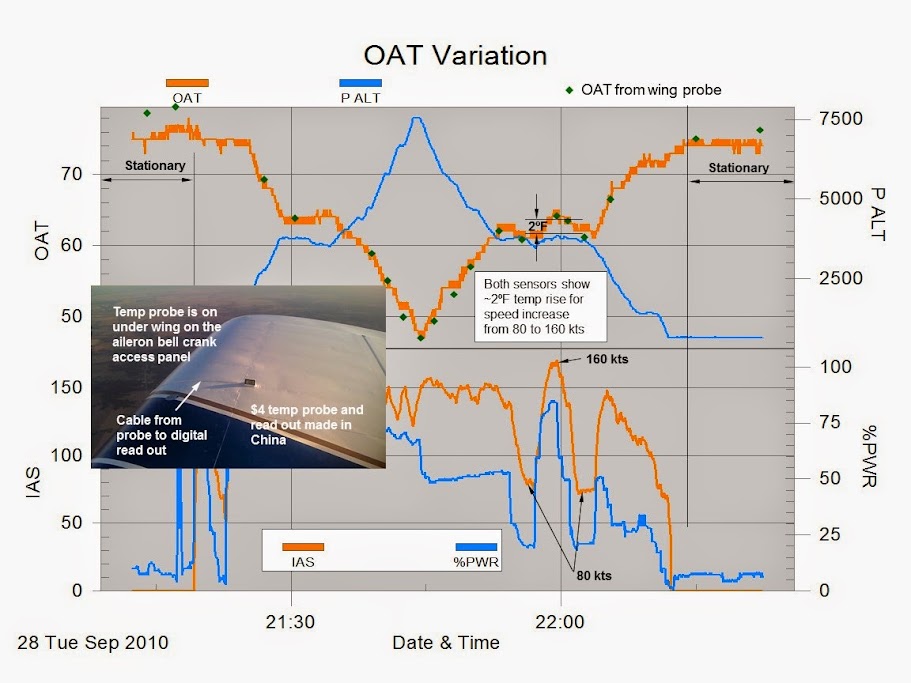OAT Test Results
Not that I need an excuse to fly and burn a tank of gas, I decided to look at the temperture difference between mounting an OAT sensor under the wing on the aileron bell crank panel and my current location of under the RH horizontal tail on the side of the fuselage. I have been wonder the best location as I had my probe outside the RH side of the fuselage about a foot aft of the cowl. This gave me large errors in temperatures during flight due to heat from the engine/exhaust. I think I was getting temps about 20 deg F too high.
What I did was mount a cheap temp sensor and read out unit on the RH wing.
On the ground in the hanger, this sensor on the wing consistantly read about 1.5-2 degrees higher then my permanent OAT sensor. I made four one hour flights and recorded the temperatures at vaious flight conditions and altitudes. Below is a graph of OAT vs time for one of the four flights.
As the graph shows at the start and end of the flight, my OAT under the tail (orange curve) reads ~2 degrees lower then the wing location (green points). During flight both sensors read approx the same temperature. The average of 40 points over the four flights was about 0.2 temp difference. The two reason I can think of why they are 2 deg. different at rest and not when flying are:
1) under the horizontal tail is getting about 2 degs F of heating from the engine
2) one of the sensors does not adaquately read temp with air flowing over it or lags in getting accurate temp.
I also thought that maybe the probes orientation under the wing did not adaquatly measure the stagnation rise but you can see that they both show a 2 deg F drop for a speed change from 150 KIAS to 80 KIAS and increases that 2 deg with an increase back to 160 KIAS. I also looked at changing mixture setting from full rich to max EGT to see if the exhaust was making any real impact and found no change in the sensor under the tail related to EGT changes from 1200 deg F to 1500 deg F.
My conclusion is that under the wing is not as influenced by the engine heat/exhaust but it is only a 2 deg F difference and therefore the under wing location may be more accurate. As you can see in the plots, I calibrated out that 2 deg F so on the ground my OAT reads low but it is accurate when flying.
Of coarse none of this shows if either probe is measuring the right temperature at altitude while flying. They only show the difference between locations (and maybe probes).





